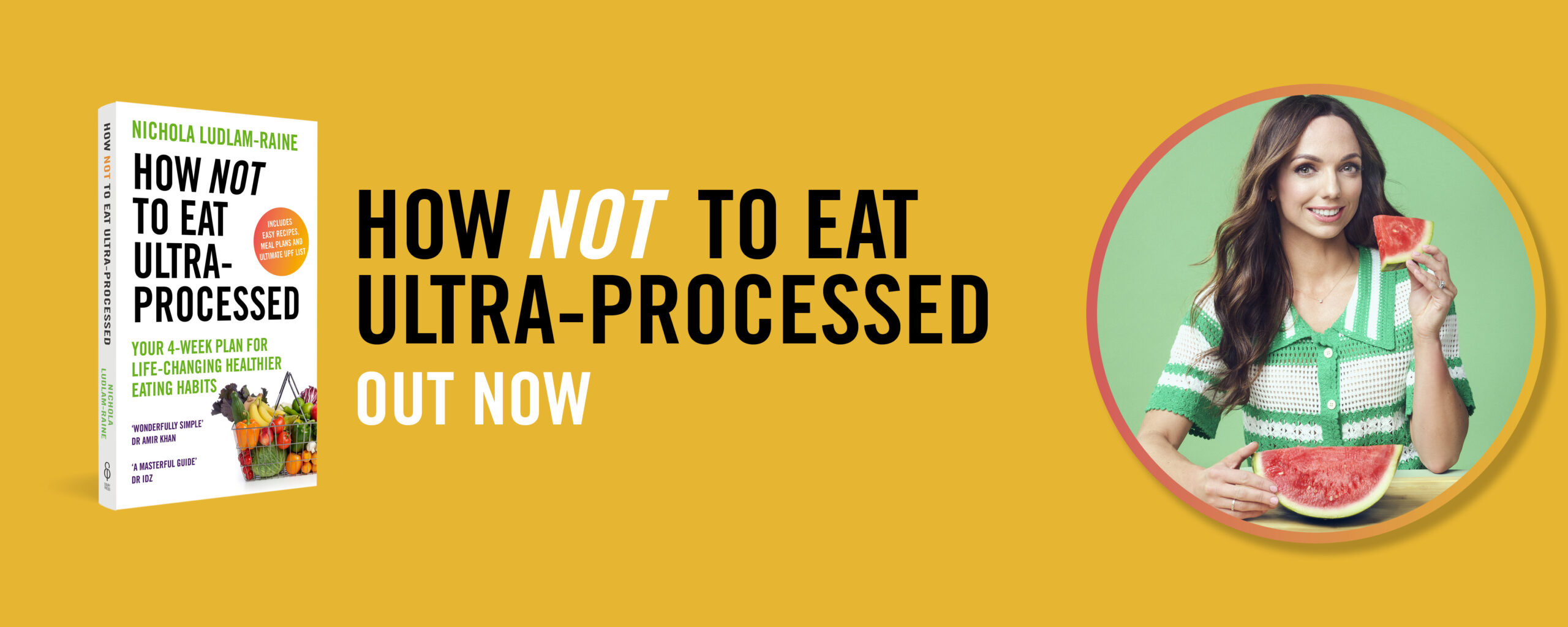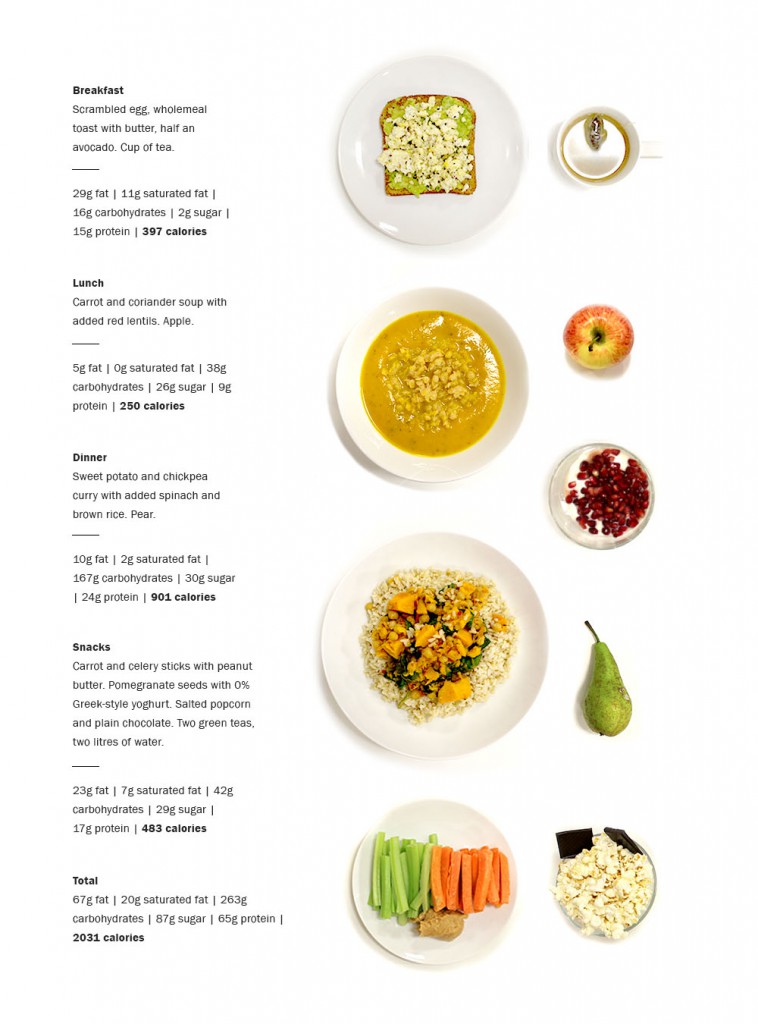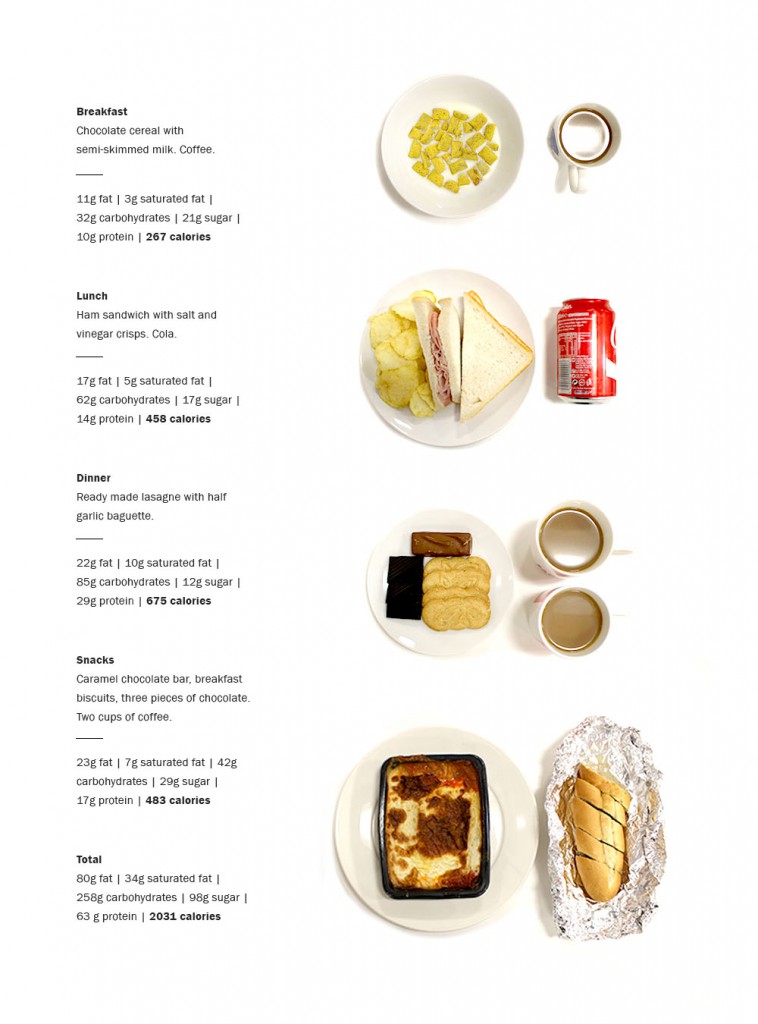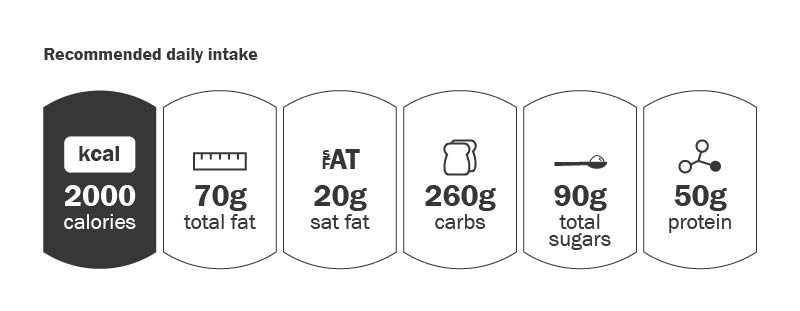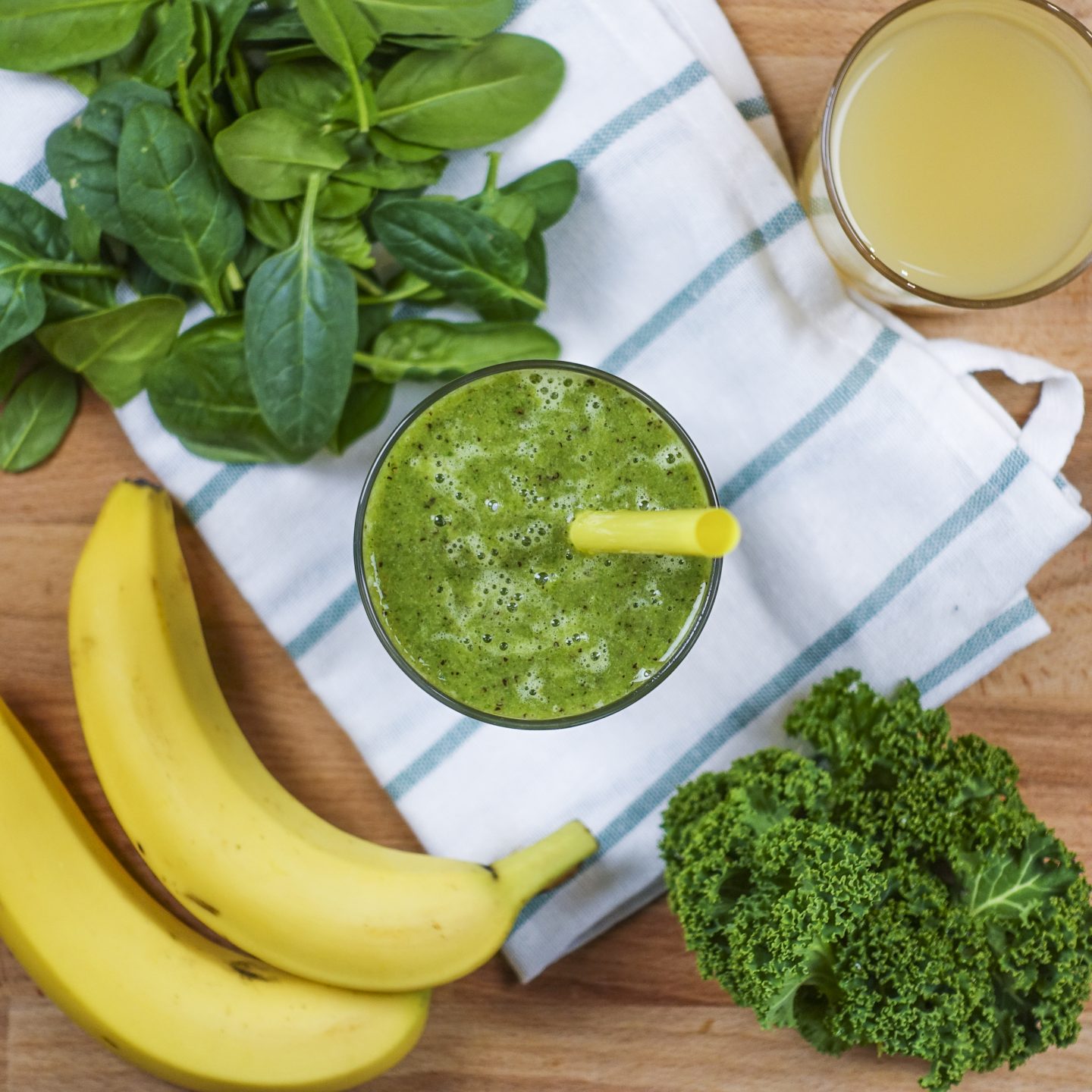
Whilst calories are ‘king’ when it comes to weight loss, they are not the sole element of a healthy eating or weight loss plan. And although I promote being ‘calorie aware’ (it’s not necessary to calorie count!), it can detract from the bigger picture i.e. what you’re actually eating!
This blog post has been shared all over the media; from the Daily Mail, The Sun and The Mirror to UK Business Insider, Pop Sugar & even Fitness Republic over in Canada!
I really hope that you find it useful and thought provoking and I would love to know what you think!
So.. here’s the question.. which of the following meal plans contain the most calories? One (left) or two (right)?
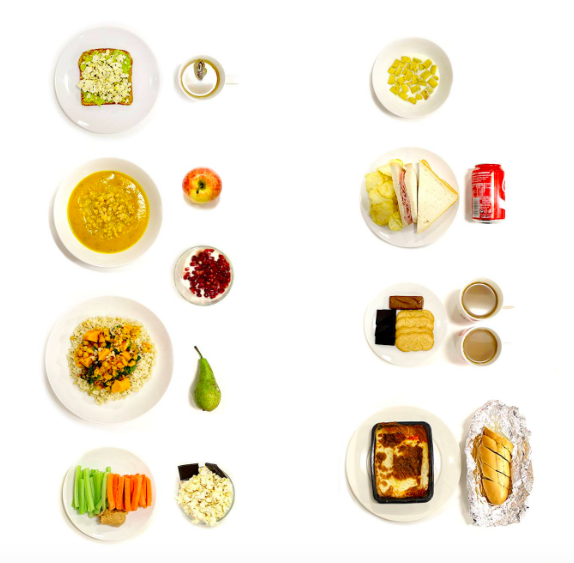
Answer: they’re equal.
Both daily diets have 2,031 calories; however, not all calories are the same. While calories are important when it comes to losing, maintaining or gaining weight, they are not the sole element that we should be focusing on when it comes to improving our health. In addition to being calorie aware, we need to focus on the types of food that we are (and aren’t!) eating.
A healthy diet is a balanced diet, containing foods from all of the five food groups;
- Fruits and vegetables for nutrients
- Whole grain or slow release starchy carbohydrates for energy and fibre
- Protein for growth and muscle repair
- Dairy for calcium
- Healthy fats for many vital bodily functions including heart and brain health
While the two daily diets provide exactly the same number of calories, only one of them will leave you feeling more energised and provide you with what your body needs to stay strong and healthy in the long term, i.e. vitamins, minerals, antioxidants, fibre as well as slow-release carbohydrates, lean protein and healthy fats.
Meal Plan 1:
- Breakfast: Scrambled Eggs wholemeal toast with butter & avocado
- Lunch: Carrot & Coriander Soup with lentils & an apple
- Evening Meal: Sweet Potato & Chickpea Curry with spinach, brown rice & a pear
- Snacks: Peanut Butter with Carrot & Celery sticks | Pear & Greek Yoghurt | Pomegranate Seeds | Popcorn & Dark Chocolate
- Drinks: Water & Green Tea
This meal plan provides:
- At least 5 portions of fruit and vegetables. Each meal provides at least one vegetable and the majority of snacks are based around fruit.
- Whole grain or slow-release carbohydrate at each meal, for example, wholemeal bread, lentils, sweet potato and brown rice.
- Lean protein sources such as lentils and chickpeas, as well as Greek yoghurt.
- Healthy fats such as avocado, olive oil (in the curry) and peanut butter which helps to maintain healthy hair, skin and nails.
- Dairy from milk and yoghurt, which is an excellent source of calcium, iodine and B vitamins.
- Sugar-free fluids in the form of water, as well as green tea to ensure optimal hydration.
- An adequate amount of the recommended macronutrients, fats and carbohydrates, without providing more than the recommended daily intake of saturated fat and sugar (including free sugars).
- Salt is also kept to a minimum by making most of the meals from scratch, and fibre levels are kept high thanks to the wide variety of fresh, wholesome ingredients.
Meal Plan 2:
- Breakfast: Cereal with milk
- Lunch: Ham Sandwich, Crisps & Cola
- Evening Meal: Ready Meal; Lasagne with Garlic Bread
- Snacks: Chocolate Caramel | Breakfast Biscuits | Chocolate
- Drinks: Coffee
Although meal plan 2 has the same number of calories, it’s lacking in fruit, vegetables and whole grains, meaning that it provides little in the way of vitamins, minerals, antioxidants and fibre. Most of the carbohydrates featured (chocolate cereal and white bread) provide quick-releasing, short-acting energy which doesn’t keep our energy up, nor our hunger levels at bay.
Meal plan 2 is also high in saturated fat, which isn’t the preferred type for long-term heart health; unsaturated fat (found in olive oil, nuts & avocados) is best. It also contains high amounts of sugar, most of which comes from the free sugars in the chocolate cereal, cola, chocolate and biscuits as opposed to natural sugars found in milk and dairy. Sugary drinks have also been linked to both dental caries and obesity, which obviously isn’t good for our health!
The Recommendation
How many calories and macronutrients you need in a day varies depending on your age, gender, weight and activity level; the older we get and the more sedentary we are the less calories we need, and if you are small or are a women then you will need fewer calories than someone who is bigger or a man!
Guidelines exist on the approximate amount of nutrients and energy you need daily for a healthy, balanced diet; they are known as reference intakes. To maintain consistency and discourage over-eating, reference intakes are based on an average-sized female doing an average amount of exercise.
Reference intakes are there to act as a guide to a balanced diet rather than a strict target. To illustrate what a balanced diet could look like, meal plan one meets nearly all of the macronutrient requirements, with slightly increased protein to support physical activity.
Healthy living is about sustainable living, which means you don’t have to deprive yourself completely from more processed (delicious!) foods like cakes and biscuits. In fact, you could consider following the 80/20 rule, which means if you eat 80% healthy foods then you can afford to indulge in foods that don’t provide quite as much goodness the other 20% of the time.
It’s ok to have the occasional day that looks like meal plan two, but for long-term health, optimal energy levels and productivity, meal plan one definitely wins!
So the next time that you’re obsessing over calories, have a think about WHAT you are eating instead; have a look at the ingredients list FIRST, and then the calorie content second!
*I worked with GoCompare to pull this piece together!
